あなたが「いけばな」や「華道」と聞いて思い浮かべるのは、どのような光景でしょうか。静かな和室に凛とたたずむ一輪の花、あるいは季節の草木が織りなす鮮やかな芸術作品かもしれません。しかし、その背後には、単なる花の装飾にとどまらない、500年以上にわたる日本の精神文化の奥深い歴史が流れています。華道は、自然との対話であり、生命の尊さを表現する哲学であり、そして自らの心と向き合う「道」なのです。
- 祈りの「供花」から始まった、精神性の道
- 室町時代に確立された、宇宙を表現する「立花」様式
- 江戸時代に花開いた、庶民の楽しみと流派の誕生
仏前に手向けられた一輪の祈り
華道の直接的なルーツは、6世紀頃に仏教と共に日本に伝わった**「供花(くげ)」**にあります。これは、仏前に花を供えるというシンプルな行為でした。当初は仏への信仰の表れでしたが、この「花を供える」という行為に、日本古来の自然を敬い、万物に神が宿ると考えるアニミズム的な思想が融合していきます。花や木が持つ生命そのものに美しさや尊さを見出し、そこに祈りや願いを込める。この精神性が、後の華道が哲学的な深みを持つための土台となりました。単なる飾りではなく、生命への畏敬の念が、その一枝一葉に込められるようになったのです。
美意識の確立 池坊専慶と「立花」の誕生
華道がひとつの芸術形式として確立されるのは、室町時代のことです。この時代、武家社会において**「書院造」**という建築様式が発展し、床の間が生まれました。この空間を飾るための洗練された花が求められるようになります。
その中心的な役割を果たしたのが、京都・六角堂の僧侶でした。中でも、15世紀に活躍した**池坊専慶(いけのぼうせんけい)は、ただ花を器に挿すのではなく、草木の姿や性質を活かし、構図の中に壮大な自然の風景や宇宙観を表現する「立花(りっか)」**という様式を大成させました。これは、いけばなが初めて「道」として意識され、体系化された瞬間であり、池坊が華道の家元として歴史の表舞台に登場するきっかけとなりました。
なぜ、この時代に? 応仁の乱を経て、荒廃した京の都で人々が心の安らぎや美を求めていたことも、華道が芸術として花開く大きな要因だったのかもしれません。
茶の湯との融合、そして庶民文化への広がり
安土桃山時代に入ると、千利休によって大成された「茶の湯」の世界で、新たな花の価値観が生まれます。それは、立花の荘厳さとは対照的に、あたかも野に咲く花をそのまま器に入れたかのような、素朴で自然な美しさを尊ぶ**「茶花(ちゃばな)」または「投入花(なげいれはな)」**でした。華美を削ぎ落とし、生命のありのままの姿を尊ぶという、わびさびの精神が色濃く反映されています。
そして、世の中が安定した江戸時代には、華道は武士や公家だけでなく、裕福な商人や町人といった庶民の間にも広く浸透しました。文化の担い手が増えたことで人々の好みも多様化し、立花や投入花から、よりシンプルで生けやすい**「生花(しょうか)」という様式が誕生します。これに伴い、池坊だけでなく古流(こりゅう)や遠州流(えんしゅうりゅう)といった数多くの「流派」**が生まれ、それぞれが独自の理論や美意識を競い合い、華道の世界はさらに豊かに発展していきました。
伝統と革新が生み出す現代の「いけばな」
明治時代以降、西洋文化の流入により、日本の生活様式は大きく変化します。洋風建築の普及や、カーネーションやバラといった西洋の花々が持ち込まれたことで、伝統的ないけばなもまた、新たな表現を模索し始めました。水盤(すいばん)と呼ばれる浅い器に花を盛るようにいける**「盛花(もりばな)」や、形式にとらわれない「自由花(じゆうか)」**が生まれ、現代の多様なライフスタイルに合わせた形で楽しまれています。
華道は、その時代の人々の暮らしや価値観を映し出しながら、伝統を守りつつも常に変化し、発展を続けてきました。その精神は国境を越え、今や”Ikebana”として世界中の人々を魅了しています。
解説ポイント①:祈りの「供花」から始まった、精神性の道
華道の根底にあるのは、単なる美の追求だけではありません。その原点である仏教の「供花」は、命ある花を仏に捧げることで、自らの命のはかなさや、だからこそ輝く生命の尊さを学ぶという仏道修行の一環でした。花をいけるという行為を通じて、植物の生命力と向き合い、自然との一体感を感じる。そして、静かに自分自身の内面を見つめる。この精神性は、時代を超えてすべての流派に共通する核心部分です。華道が「華の道」と書かれ、茶道や書道と同じく「道」として捉えられるのは、この技術の先にある精神的な修養を重んじる文化の表れなのです。
解説ポイント②:室町時代に確立された、宇宙を表現する「立花」様式
室町時代に池坊専慶が大成した「立花」は、華道史における最初の大きな様式の確立でした。立花は、単に美しい花を飾るのではなく、器の上で壮大な世界観を表現することを目的とします。中心となる「真(しん)」の役枝(やくえだ)が須弥山(しゅみせん)という仏教世界の中心にある山を象徴し、そこから伸びる様々な役枝が山や谷、川の流れなどを表現します。一本の松、一輪の菊が、ただの植物ではなく、森羅万象を構成する要素として配置されるのです。この非対称でありながら調和の取れた構成美は、日本独自の美意識の結晶であり、後のいけばな様式の全ての基礎となっていきました。
解説ポイント③:江戸時代に花開いた、庶民の楽しみと流派の誕生
江戸時代は、250年以上にわたる平和な時代が続き、経済が発展し、町人文化が爛熟した時代です。それまで特権階級のものであった文化や芸術が、庶民の「習い事」として広く楽しまれるようになりました。華道もその一つで、特に「生花」という新しい様式がその普及を後押ししました。生花は、立花ほど複雑ではなく、天地人(てんちじん)の三つの役枝を基本とし、より少ない花材で簡潔にいけられるのが特徴です。この分かりやすさが庶民に受け入れられ、女性の嗜みとして、また町人の教養として爆発的に広まりました。人が増えれば、教え方も考え方も多様化します。その結果、師匠から弟子へと受け継がれる中で、独自の理論や技術を持つ「流派」が次々と誕生し、それぞれが看板を掲げて競い合うことで、華道の世界は飛躍的な発展を遂げたのです。
参考文献
- いけばなの歴史 | いけばな池坊
- 華道とは?その歴史や流派、必要な道具について徹底解説! | DearBouquet
- 華道の歴史をたどる~その発祥から現代までの流れ~ | ワゴコロ
- うちの郷土料理 華道・いけばな | 農林水産省
【English Article】
Not Just Flower Arranging: The Profound 500-Year History of “Kadō,” the Art That Fascinates the World
What comes to mind when you hear the words “Ikebana” or “Kadō”? Perhaps you picture a single flower standing elegantly in a quiet Japanese room, or a vibrant work of art woven from seasonal plants and branches. However, behind this image lies a profound history of Japanese spiritual culture spanning over 500 years, extending far beyond mere floral decoration. Kadō is a dialogue with nature, a philosophy that expresses the sanctity of life, and a “path” to confront one’s own heart.
- A spiritual path that began with “Kuge,” or floral offerings of prayer.
- The “Rikka” style, established in the Muromachi period to express the universe.
- The blossoming of popular enjoyment and the birth of various schools during the Edo period.
A Single Flower of Prayer Offered at the Buddhist Altar
The direct roots of Kadō can be traced back to “Kuge” (供花), the practice of offering flowers at Buddhist altars, which was introduced to Japan along with Buddhism around the 6th century. Initially, it was a simple act of faith toward Buddha. However, this act of “offering flowers” merged with Japan’s ancient animistic belief in respecting nature and seeing deities in all things. The Japanese people began to find beauty and sanctity in the life of flowers and trees themselves, infusing them with prayers and wishes. This spirituality laid the foundation for Kadō to later develop its philosophical depth. It was no longer just decoration; a reverence for life itself was embedded in every branch and every leaf.
The Establishment of an Aesthetic: Ikenobō Senkei and the Birth of “Rikka”
It was during the Muromachi period (1336-1573) that Kadō became established as a distinct art form. In this era, the “Shoin-zukuri” architectural style developed within the samurai society, giving rise to the “tokonoma,” an alcove for displaying art. This created a demand for sophisticated floral arrangements to adorn the space.
Central to this development were the monks of the Rokkaku-dō temple in Kyoto. Among them, Ikenobō Senkei (池坊専慶), who was active in the 15th century, perfected the “Rikka” (立花) style. This was not simply placing flowers in a vase, but rather utilizing the natural forms and characteristics of plants to express a magnificent natural landscape and a cosmic view within the composition. This was the moment Ikebana was first recognized as a “Dō” (path or way) and systematized, marking the emergence of the Ikenobō school as the origin of Kadō.
Why at this time? The fact that people were seeking spiritual solace and beauty in the war-torn capital of Kyoto after the Ōnin War may have been a major factor in Kadō’s blossoming as an art form.
Fusion with the Tea Ceremony and Expansion into Popular Culture
In the Azuchi-Momoyama period (1573-1603), a new aesthetic of flowers emerged from the world of the “Chanoyu” (tea ceremony), perfected by Sen no Rikyū. In contrast to the grandeur of Rikka, this style, known as “Chabana” (茶花) or “Nageirebana” (投入花), valued a simple, natural beauty, as if the flowers were taken directly from a field and placed in a vase. It strongly reflected the spirit of “wabi-sabi,” which honors the unadorned, as-is state of life.
During the stable Edo period (1603-1868), Kadō spread widely beyond the samurai and nobility to include wealthy merchants and townspeople. As the bearers of culture diversified, so did their tastes. A new, simpler style called “Shōka” (生花) was born from Rikka and Nageirebana. This led to the emergence of numerous “schools” (流派), such as the Koryū (古流) and Enshū-ryū (遠州流), in addition to Ikenobō. Each school competed with its own unique theories and aesthetics, further enriching the world of Kadō.
Modern “Ikebana” Born from Tradition and Innovation
From the Meiji era (1868-1912) onwards, the influx of Western culture significantly changed the Japanese lifestyle. With the spread of Western-style architecture and the introduction of flowers like carnations and roses, traditional Ikebana also began to explore new forms of expression. This led to the creation of “Moribana” (盛花), which arranges flowers in a shallow container called a “suiban,” and “Jiyūka” (自由花), or freestyle arranging, which is not bound by formal rules. These new styles are enjoyed in forms that suit the diverse lifestyles of today.
Kadō has continuously evolved, reflecting the lives and values of people in each era while preserving its traditions. Its spirit has crossed borders and now, as “Ikebana,” it captivates people all over the world.
Analysis Point ①: A spiritual path that began with “Kuge,” or floral offerings of prayer.
At the core of Kadō lies more than just the pursuit of beauty. Its origin, the Buddhist “Kuge,” was part of Buddhist practice where offering living flowers to Buddha was a way to learn about the transience of one’s own life and, in turn, the brilliance of life’s sanctity. Through the act of arranging flowers, one engages with the life force of plants, feels a sense of unity with nature, and quietly reflects on one’s inner self. This spirituality is the core element common to all schools throughout the ages. The reason Kadō is written as “華道” (The Way of Flowers) and is considered a “Dō” (path), like the tea ceremony (Sadō) and calligraphy (Shodō), is a reflection of this culture that emphasizes spiritual training beyond mere technical skill.
Analysis Point ②: The “Rikka” style, established in the Muromachi period to express the universe.
The “Rikka” style, perfected by Ikenobō Senkei in the Muromachi period, was the first major stylistic establishment in the history of Kadō. Rikka aims not just to display beautiful flowers, but to express a magnificent worldview within the vase. The central branch, the “Shin,” symbolizes Mount Sumeru, the mountain at the center of the Buddhist cosmos, while various other branches represent mountains, valleys, and rivers. A single pine branch or a chrysanthemum is not just a plant but is arranged as an element constituting the entire universe. This asymmetrical yet harmonious compositional beauty is a crystal of Japan’s unique aesthetic and became the foundation for all subsequent Ikebana styles.
Analysis Point ③: The blossoming of popular enjoyment and the birth of various schools during the Edo period.
The Edo period was an era of peace lasting over 250 years, marked by economic development and the flourishing of townsman culture. Arts and culture, previously the domain of the privileged classes, became widely enjoyed by commoners as “narai-goto” (lessons or accomplishments). Kadō was one of them, and the new “Shōka” style, in particular, spurred its popularity. Shōka is less complex than Rikka, based on three main branches representing “Ten-Chi-Jin” (Heaven, Earth, and Man), and is characterized by its ability to be arranged concisely with fewer materials. This simplicity was embraced by the common people and spread explosively as a refinement for women and an element of culture for townspeople. As the number of practitioners grew, teaching methods and philosophies diversified. In the process of being passed down from master to disciple, “schools” with their own unique theories and techniques were born one after another. By competing under their own banners, they propelled the world of Kadō to dramatic development.

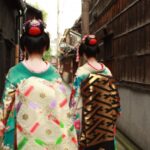

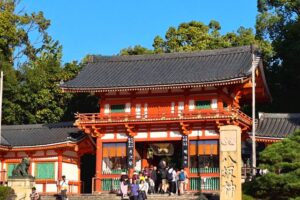
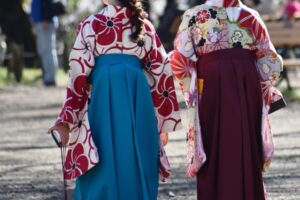
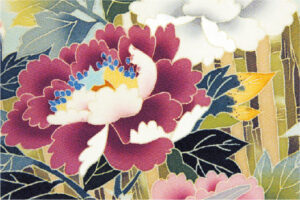
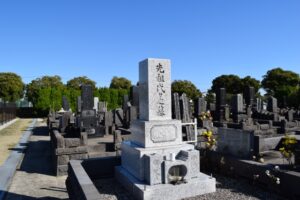

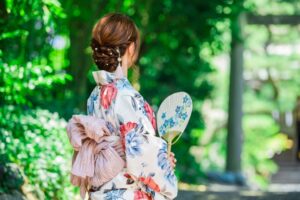

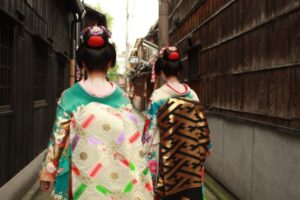
コメントを残す